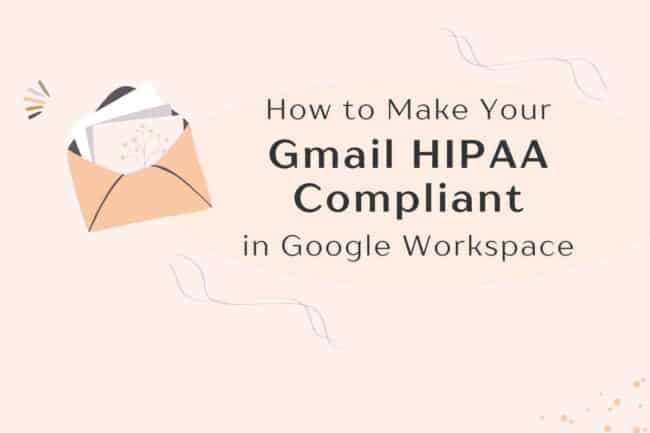Cookies? Where have I heard that word?
Other than the round, delicious snack that many adore, the term “cookie” has become increasingly popular in recent years – particularly in reference to technology.
So, what are cookies? In the most basic sense, cookies are small text files that are placed on your computer by websites that you visit. These files allow the website to store information about your visit, which can be useful in a number of ways.
Third-party cookies are used to keep track of your shopping cart as you browse a particular website. For instance, you browse through an e-commerce store and add a jacket to your cart, but do not complete the purchase. If you have accepted the option of cookies, you will be displayed relevant ads based on your browsing history – images of jackets will be displayed in this case.
However, with the popularity of mobile devices and the rise of ad blockers, cookies are becoming less effective. In fact, Google started phasing out cookies and said that it would end support for Cookies as soon as it realized how to address the needs of users. Google, being the giant that it is, has a significant impact on the future of cookies.
Are cookies going away? If yes, what does this mean for you? If you are a website owner, it is important to start thinking about how you will keep track of your users without cookies as many experts are believing that cookies will eventually become obsolete.
Here are a few ways of getting prepared for cookies exiting the scene:
1. Use server-side tracking
Server-side tracking, also known as cloud delivery, works when a pixel forwards data to your organization’s web server. It is when data is sent to a third-party server, usually done via a JavaScript request.
Google Tag Manager is an example of how server-side tracking is done with the help of users’ IP address and their web browsers. Tags also gives you control of who gets access to the data and who doesn’t. Tag management allows you to make use of the information for your advertisements.
Perks:
Since your own server is being used instead of a third-party server, there is an extra layer of security. This is not the case in client-side servers. Since customers’ data is kept safe, it is a more reliable way to track website visitors.
Some other very important benefits of server-side tracking are that there are no analytics tool to slow down websites. Instead, the processing takes place on the cloud, like kDrive,which consequently improves the user experience.
Drawback:
It is not free of cost.
2. Use a first-party cookie.
A first-party cookie is a cookie that is set by the website that you are visiting. It helps websites in remembering your details such as your login information, the language you speak, and items in your shopping cart.
Perks:
A marketer can also view such statistics by using the analytics dashboard on the website which can be used to better understand user behavior. For instance, Google Analytics is a plugin that comes with Content Management Systems (CMS) such as WordPress allowing site owners to collect data such as the number of clicks on different pages, the bounce rate, the average duration spent on each page, the source of the traffic (search engines, social media, direct traffic, etc.), and even geographical locations of the users coming to the website.
Drawback:
A drawback of first-party cookies is that they cannot be used to track the activities of users on other websites. If you are starting a new website you will not be getting a lot of users so you will not be able to make the most out of first-party cookies.
3. Federated Learning of Cohorts (FLoC)
This is a new initiative by Google that aims to replace cookies with a more privacy-conscious alternative.
FLoC works by grouping users into cohorts based on their common interests and then displaying ads accordingly. In this way, advertisers are able to reach the appropriate audiences without having to track individual users.
Perks:
FLoC differs from third-party cookies in the sense that the data is not shared with external parties. Instead, it is used simply to divide users into different groups according to their personas.
Drawbacks:
Since it something being released by Google, FLoC will only be available on Google Chrome. Users of different browsers will still have to find some other method other than FLoC.
4. Use a fingerprinting technique.
Fingerprinting is a method of identifying users according to their fingerprints. Typical thumbprints or fingerprints are used to unlock a device or access a website.
The characteristic is different for each user so it can be used to differentiate people across different websites. Details about the users’ devices can also be recognized. From IP address to operating system to the web browser and its language settings and even time zone and screen resolution, you can have access to all of these data.
The fingerprinting technique is mainly used to access banking applications and are required before transactions are performed.
Perks:
The technique also helps in preventing online frauds from occuring and serves as an extra method of authentication.
Drawback:
An important disadvantage to this method is that it is not regulated by regulations such as the General Data Privacy Regulations (GDPR) so companies can collect whatever information they want without the user’s knowledge which raises serious privacy concerns. In other words, it means that users do not have the option to opt out of being tracked via fingerprinting.
In addition to that, internet history of users is also tracked by advertisers through fingerprinting. This allows advertisers to create highly targeted campaigns, but it also raises significant privacy concerns among users who are often unaware of the extent of data being collected. Moreover, techniques like the effect of domain forwarding on SEO can indirectly influence how users encounter ads, as improper forwarding may alter search rankings and visibility. As a result, both advertisers and website owners must carefully balance optimization strategies with ethical considerations to maintain trust and compliance.
5. Universal Identifiers
Universal identifiers are unique IDs that can be assigned to each user without the need for cookies. It is a way of tracking users without relying on tech providers. It eliminates the need to sync data from different platforms or websites.
A way this method works is by Implementing an “if-none-match” header which allows you to seamlessly track users. It works by storing a unique identifier in the user’s browser and then checking for that identifier when the user visits your website.
Some user identifiers could be emails or phone numbers that are hashed. Being hashed means that they are converted into a string of characters that can’t be deciphered. This is done to protect user privacy.
Perks:
This alternative to third-party cookies follows more compliances and has better privacy compared to the other methods. Targeting specific audiences becomes simpler. In addition to that, you can easily differentiate between an authentic user and a bot.
Drawback:
Although with Universal IDs advertisers can run cross-platform campaigns, a drawback is that they are only available in certain niches so the advertising reach becomes quite limited.
6. Data Pools
They are a collaborative data-sharing initiative that can serve as an alternative to cookies. It relies on the pooling of data from multiple sources in order to create user profiles.
It has been suggested that federated data learning is a type of collaborative machine learning where data is distributed across different devices and training takes place locally on each device. The results are then aggregated and shared with a central server.
Perks:
The main advantage of this method is that data matching is done in a relatively secure method. Additionally, you can gain insights about the audience of brands.
Drawbacks:
For data pooling, you need to have a reliable intermediary. Companies also become dependent on publishers as they can only work with them if they have direct contracts.
Final Verdict: What Is The Future of Cookies
Cookies are old technology and although first-party cookies are still valid, it is time to bid farewell to third-party cookies. There are many alternatives to cookies, so it is important to choose the one that makes the most sense for your company’s marketing and advertising strategy.
Implementing one of the aforementioned methods will help you keep track of your website visitors.
Each of these methods has its own pros and cons, so it is important to choose the one that makes the most sense for your website. It is important to consider user’s privacy when implementing any of these methods.
Make sure the alternatives follow compliances such as GDPR. It would be smart to analyze if there are any negative implications of the alternative methods before applying them.
If cookies are becoming redundant and you do not want to lose your competitive advantage, it is better to implement one of these alternatives sooner rather than later.
Author Bio:
Osama Zahid is a technology content strategist who is passionate about content marketing and all things SEO. He has helped various companies rank their content on the first page of search engines. In his free time, Osama loves to play football and travel.















